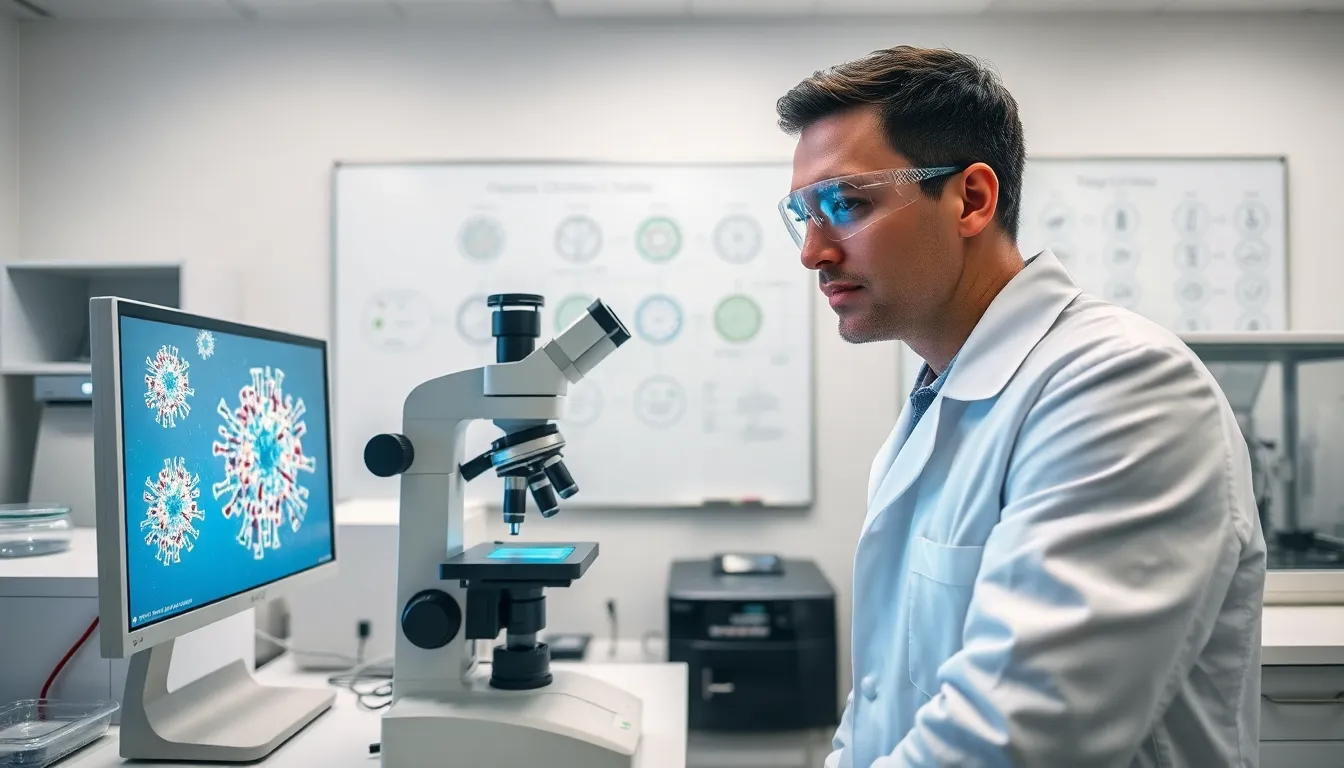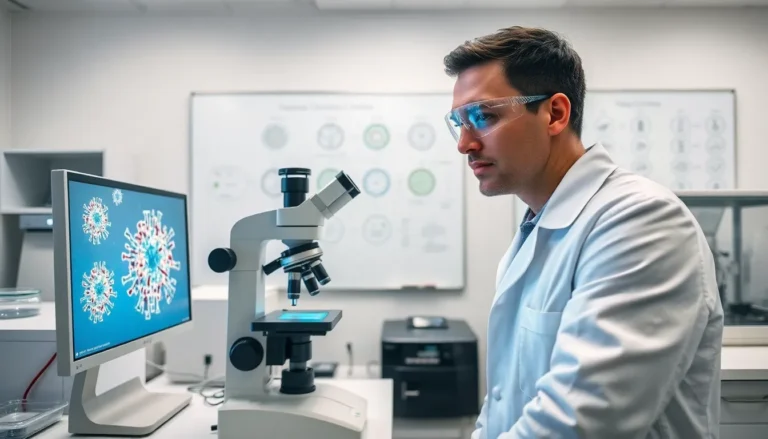Table of Contents
ToggleEver wondered why viruses can go from zero to a hundred in no time? Viral replication is the sneaky process that lets them multiply and wreak havoc on their hosts. While most of us aren’t keen on inviting viruses to our bodies (and for good reason), understanding how they replicate can give us insight into combating infections. Let’s investigate into this intriguing realm of cellular hijinks, where microscopic invaders take center stage.
What Is Viral Replication?

Viral replication refers to the process by which a virus makes copies of itself within a host cell. Unlike other microorganisms like bacteria, viruses cannot reproduce on their own. Instead, they invade host cells and hijack the cellular machinery to produce new viral particles. It’s almost like a viral take-over: the virus commandeers the host’s resources to churn out replicas, ensuring its survival and spread. Though this might sound intense, it’s an essential aspect of understanding infectious diseases and their impact on health.
The Importance of Viral Replication in Infectious Diseases
Understanding viral replication is crucial for several reasons. First, it sheds light on how diseases spread. For instance, during a viral outbreak, one infected individual can rapidly spread the virus to others because of replication within their bodies. Also, knowledge about this process enables researchers to develop antiviral medications. These treatments often aim to disrupt specific stages of replication, rendering the virus powerless. Also, studying viral replication informs vaccine development. By understanding how viruses replicate, scientists can indeed create vaccines that effectively stimulate the immune system to recognize and combat these invaders. So, viral replication is not just a scientific curiosity: it holds the key to controlling infectious diseases.
Stages of Viral Replication
Viral replication occurs in several defined stages, each critical to the successful multiplication of the virus. Here are the five key stages:
1. Attachment and Entry
The journey begins when a virus attaches itself to a susceptible host cell. This attachment is mediated through specific interactions between viral proteins and receptors on the host cell surface. Once attached, the virus enters the cell, either through direct fusion with the cell membrane or endocytosis, where the cell engulfs the virus.
2. Uncoating
After the virus enters the host cell, it must uncoat itself. This process involves the breakdown of its protective protein shell, releasing its genetic material into the host cell’s cytoplasm. Uncoating is essential because the viral genetic material must be accessible for the next steps of replication.
3. Replication and Transcription
During this stage, the virus begins replicating its genetic material. Depending on whether the virus is RNA or DNA-based, it uses the host’s cellular machinery in different ways to create copies of its genome. Also, transcription occurs simultaneously, wherein the viral genome is converted into messenger RNA (mRNA), dictating the production of viral proteins necessary for new virions.
4. Assembly
Once the genetic material and proteins are produced, the next step is assembly. New viral particles are assembled from the replicated genetic material and proteins. This step occurs in the host cell’s cytoplasm or near the cell membrane, depending on the virus type. The newly assembled particles are often immature and need further processing.
5. Release
Finally, the mature virus particles are released from the host cell. This can occur through cell lysis, where the host cell bursts, or budding, where particles exit the cell membrane without immediately destroying the cell. This release enables the virus to infect new cells, so continuing the cycle of replication and infection.
Factors Influencing Viral Replication
Several factors can influence the efficiency of viral replication. Firstly, the type of virus plays a significant role. Some viruses replicate quickly, while others do so slowly. Environmental factors, such as temperature and pH, can also impact replication rates. Also, the presence of antiviral drugs can inhibit specific stages of replication, effectively slowing down the process. Host factors, including the immune response, are equally crucial. A robust immune system can recognize and eliminate infected cells, putting a damper on the virus’s replication capabilities. Understanding how these factors interact can help in strategizing treatments and interventions against viral infections.
Consequences of Viral Replication
The consequences of viral replication extend far beyond the immediate infection. On one hand, the replication of the virus leads to the dissemination of pathogens, resulting in outbreaks and epidemics. On the other hand, the host’s immune response to viral replication can cause inflammation and other symptoms associated with viral illnesses, such as fever, fatigue, and muscle aches. In chronic infections, uncontrolled viral replication can lead to severe health issues, like tissue damage and immune system failure. Besides, efficient viral replication contributes to genetic diversity, allowing viruses to adapt and evade immune responses, which can complicate treatment efforts.
Future Directions in Viral Replication Research
As scientists continue to uncover the complexities of viral replication, future research directions are becoming clearer. Innovative approaches, such as gene editing technologies like CRISPR, hold the potential to target and dismantle specific stages of viral replication in human cells. Also, studies focusing on the interactions between the virus and host cell provide insights into new therapeutic targets. The ongoing threat of emerging viruses also emphasizes the need for understanding replication processes across various viral families. Eventually, advancements in this field could significantly improve how we combat viral infections.







